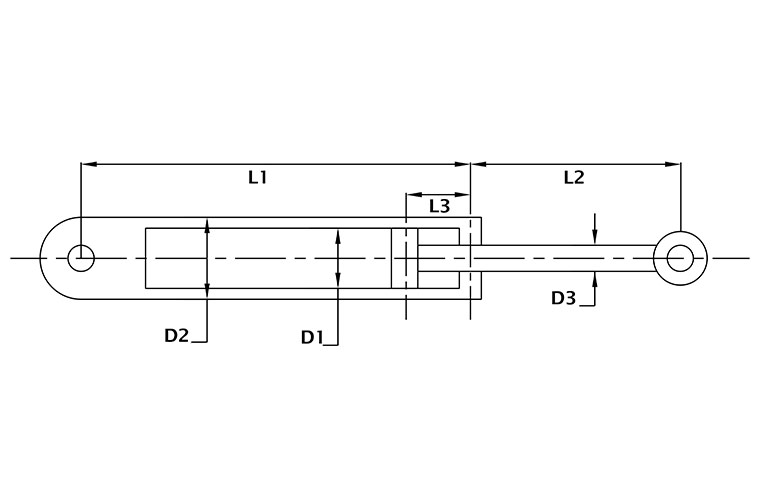Hydraulic cylinder column strength is essential in most applications. Here, we go into some basic specifications to consider when selecting, mounting and using hydraulic cylinders.
By Josh Cosford, Contributing Editor
As someone who helps run a cylinder manufacturing company, I can tell you that hydraulic cylinder column strength is a poorly understood concept by designers and end users. I’m not going to claim that every customer is clueless; many machine builders and OEMs have been in the game long enough to select and apply long-stroke hydraulic cylinders correctly. However, column strength is an essential consideration in many applications.
Column strength refers to the relative capacity for a rod (in this case) to withstand lateral deflection and subsequent buckling. I always use the example of a tape measure, which, when you extend upward and outward into free air, becomes less stable with each inch it extends. At the extreme limit of column strength, even a ladybug landing on the tape results in sudden buckling and bending. If you haven’t already played around with a tape measure to see how far you can extend it before buckling, I’ll wait while you do that now.

Figure 1. Hydraulic cylinder column strength
How far did you get it? My personal record of horizontal distance is about six-and-a-half feet. Try this length yourself, but then have a colleague lightly tap the end of the tape and see how quickly the spectacle ends with a metallic twang as the tape hits the floor. Now, extend the tape to only one foot long and then push down on the tip. You’ll immediately observe the difference in strength, and this concept highlights the effect we try to prevent when designing hydraulic cylinders.
Column strength is dictated primarily by rod length, rod diameter, and axial alignment but also by the rod’s yield strength. Rod length factors so strongly with column strength that any extra length factors exponentially to weaken the assembly. For a circular rod, as is standard in hydraulics, we calculate the slenderness ratio as SR = Le ÷ D, where Le is the effective length of the rod, and D is the rod diameter.
In the case of hydraulic cylinders, the effective length considers the center of the rod end mounting point, whether a cross tube, clevis or fixed mounting, and the point of bearing support at the cylinder’s head. However, the overall column strength of a hydraulic cylinder includes many other factors such as piston diameter, barrel outside diameter, effective tube length (distance from mounting point to rod bearing point and distance between the piston bearing point and the rod bearing point. (See Figure 1 for examples.)
- D1 = ID of the tube (bigger is stronger)
- D2 = OD of the tube (bigger is stronger)
- D3 = OD of rod (bigger is stronger)
- L1 = Distance from mounting point to rod bearing (shorter is stronger)
- L2 = Distance from rod attachment point to rod bearing (shorter is stronger)
- L3 = Distance from piston to rod bearing (longer is stronger)
The L3 dimension (essentially the distance between the piston and the rod bushing) is variable, residing at its longest when the cylinder is retracted and at its shortest when fully stroked. Hydraulic cylinders are strongest in axial compression when retracted, as the column is shortest and load most axially supported. When a long stroke cylinder extends, you lose the distance of this support column, which, compared to a tape measure, is like holding the tape at an intermediate distance using your free hand. While supporting the tape, you could likely extend it another few feet from the base. We recreate this effect on a hydraulic cylinder by adding a stop tube, improving inherent column strength.
Column strength is a dimensional numbers game, and even when you run the calculations, you must also factor in how the cylinder is mounted and guided. A cylinder that pivots at both the rod and clevis allows for possible axial misalignment, especially when fully extended. However, a fixed head mount (ME5) pushing a rigidly guided load provides a superior combination of axial stability and high column strength.
As you know, I write with the fluid power neophyte in mind. The most precise calculations for column strength also include data such as the modulus of elasticity of the tube and rod material, moments of inertia, and some trigonometry, all of which would take many pages to explain. For the comprehensive method to calculate cylinder column strength and buckling loads, refer to NFPA standard T3.6.37 R1-2010 (R2015).
Filed Under: Components Oil Coolers, Cylinders & Actuators, Engineering Basics, Technologies